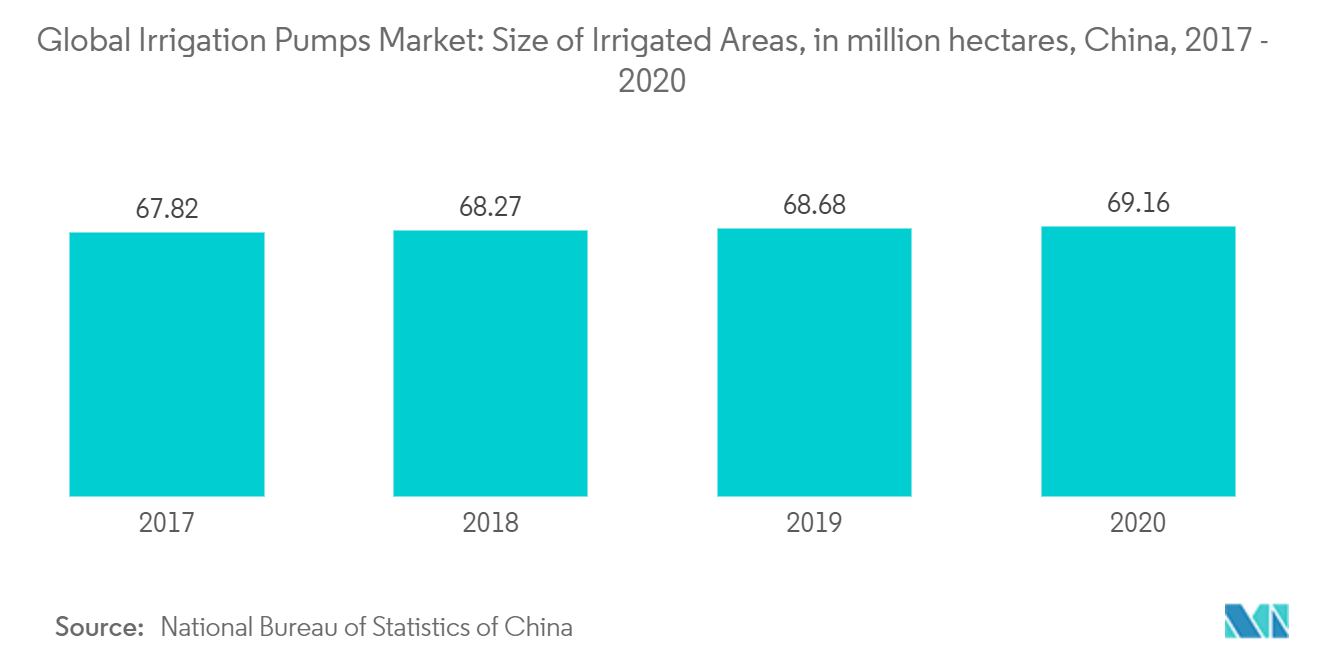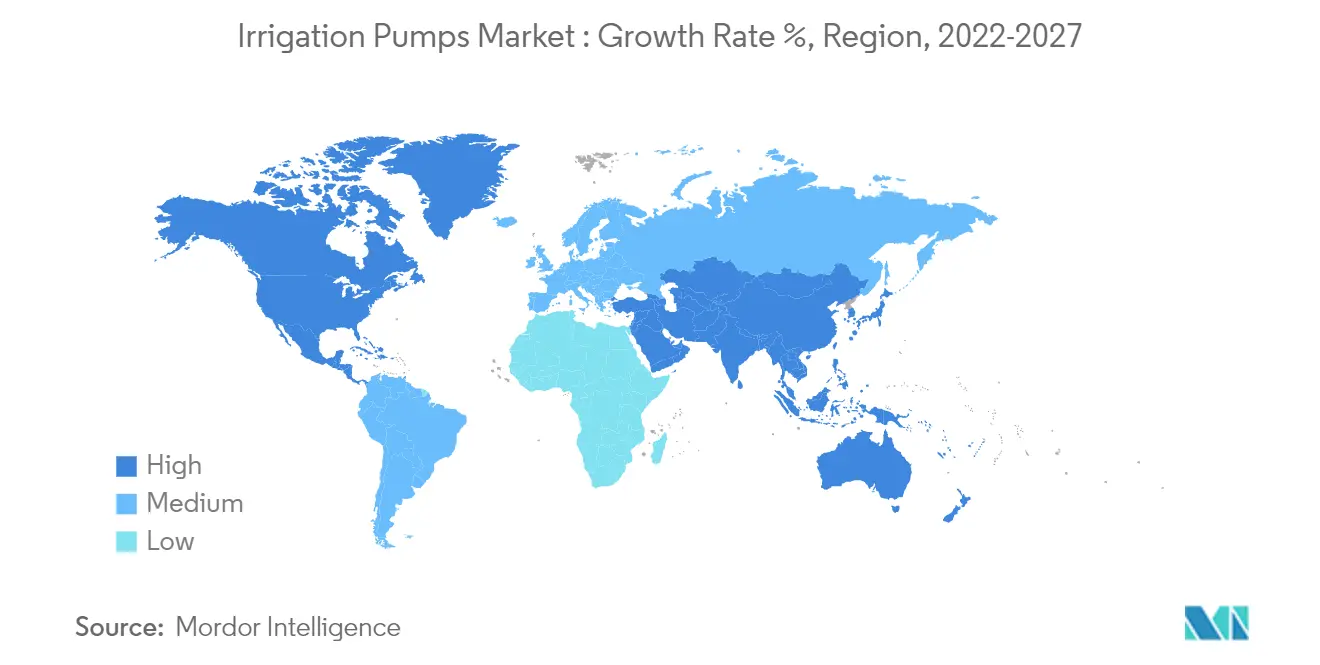Market Trends of Irrigation Pumps Industry
This section covers the major market trends shaping the Irrigation Pumps Market according to our research experts:
Adoption of Irrigation Systems in Developing Countries
Agriculture plays an important role in most developing countries. For instance, the Government of India is formulating policies and initiatives that would help in increasing agriculture production along with sustainable development. For instance, in 2020, the promotion of solar irrigation pumps is among one those policies. The provision of heavy subsidies and schemes (JNNSM, KUSUM, etc.) for the adoption of solar pumps have increased their affordability. Because of the increased affordability of solar pumps after subsidies, the popularity of solar pumps has increased in Rajasthan, which has resulted in an increased rate of adoption. According to a study by FAO, the developing countries as a whole are expected to expand their irrigated area from 202 million hectares in 1997/99 to 242 million hectares by 2030. Most of this expansion will occur in land-scarce areas of southern and eastern Asia, where irrigation is already crucial. The study covered 93 developing countries across the globe. Countries such as China and India are benefited from various subsidies given by the government to increase the area under irrigation. It is estimated that a total irrigation potential of some 402 million hectares in developing countries, of which half is currently in use. Cropping intensities and yields are systematically higher in irrigated than in rain-fed areas. Thus, the demand for an efficient irrigation system is gaining momentum by the day and is likely to drive the Irrigation pumps market in the forecast period.

The Irrigation Pump Market Advancing Rapidly in Asia-Pacific
The Asia-Pacific region's agrarian countries, including China, India, and others, are among the major contributors to the market's growth. The market's expansion has been supported by the availability of fertile land and improvements in the farming process. In China, high-value cash crops acreage has been expanding in the face of water shortages since these are often more suited to water-saving irrigation practices, bringing higher productivity.
Furthermore, governments have implemented a variety of financial and non-financial incentives to aid the market's expansion. In India, a solar-powered lift irrigation system was introduced in November 2016 as a flagship scheme of the Chhattisgarh government, which got operational in October 2020. This irrigation system ensures that farmers in Patelpara can grow vegetables even in the summer and winter seasons.
Furthermore, in 2019 it was reported that more than 181,000 solar power irrigation pumps were installed in the country over the past three years for meeting the electricity demand for irrigation under the Pradhan-Mantri Kisan Urja Suraksha Evam Utthaan Mahabhiyaan (PM-KUSUM) scheme be being implemented by the Ministry of New and Renewable Energy (MNRE). Thus, increasing government initiatives coupled with the rising dependency of the population on agriculture will drive the market in the region during the forecast period.


